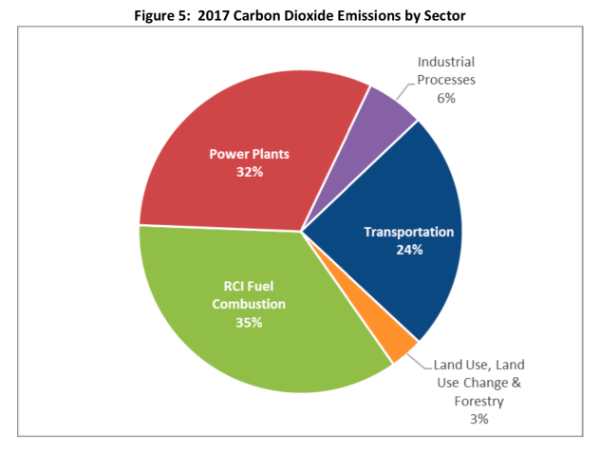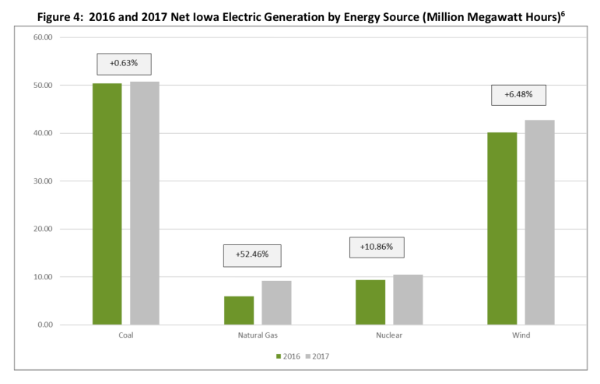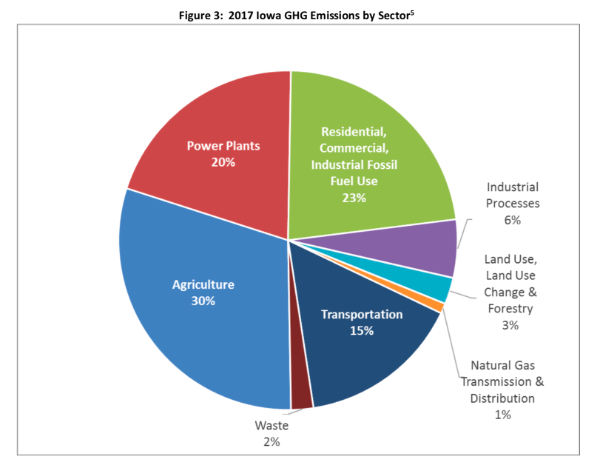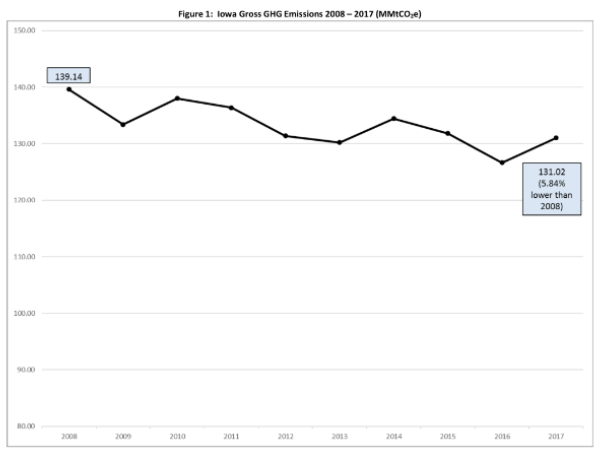Increased use of coal- and natural gas-power plants for production of electricity and two new fertilizer plants helped pushed up Iowa's greenhouse gas emissions by 3.5 percent in 2017.
The hike in emissions came after two years of statewide declines. Even with the increase, total greenhouse gas emissions in 2017 were nearly 6 percent lower than 10 years ago.
The two fertilizer plants – CF Industries near Sioux City and Iowa Fertilizer in Wever County near Ottumwa – increased carbon dioxide emissions from industrial processes to 7.25 million metric tons. The two new plants produce ammonia and urea, and were the primary contributors to the increase in industrial emission from .92 million metric tons in 2016 to 2.6 million metric tons in 2017.

Carbon dioxide (CO2) is the primary component of greenhouse gas emissions. Natural gas- and coal-fired power plants along with residential, commercial and industrial (RCI) fuel combustion are by far the main emitters of CO2 in Iowa.

While electric production from coal-fired power plants has remained steady at nearly 50 percent, electric production from natural gas-fired plants increased more than 50 percent in 2017 from the previous year. Natural gas-fired plants are less polluting than coal-burning plants, but still produce CO2 and other greenhouse gases in the combustion process.

Agriculture sources contribute 30 percent of greenhouse gas emissions and result from livestock and crop production, manure management and ag soils (manure, runoff, plant fertilizers, plant residues and cultivation of highly organic soils).

Greenhouse gas emissions – comprised primarily of carbon dioxide (CO2), methane and nitrous oxide, hydrofluorocarbons, perfluorocarbons and sulfur hexafluoride – trap heat in the atmosphere, which leads to warming of the planet. A total of 131.02 million metric tons (carbon dioxide equivalent) were emitted by statewide sources in 2017, compared with 139.14 million metric tons in 2008.
CLICK HERE to download the 2017 Greenhouse Gas Emission report by the Iowa Department of Natural Resources. The state-mandated report is issued annually with the most recent report for 2017 emissions.
